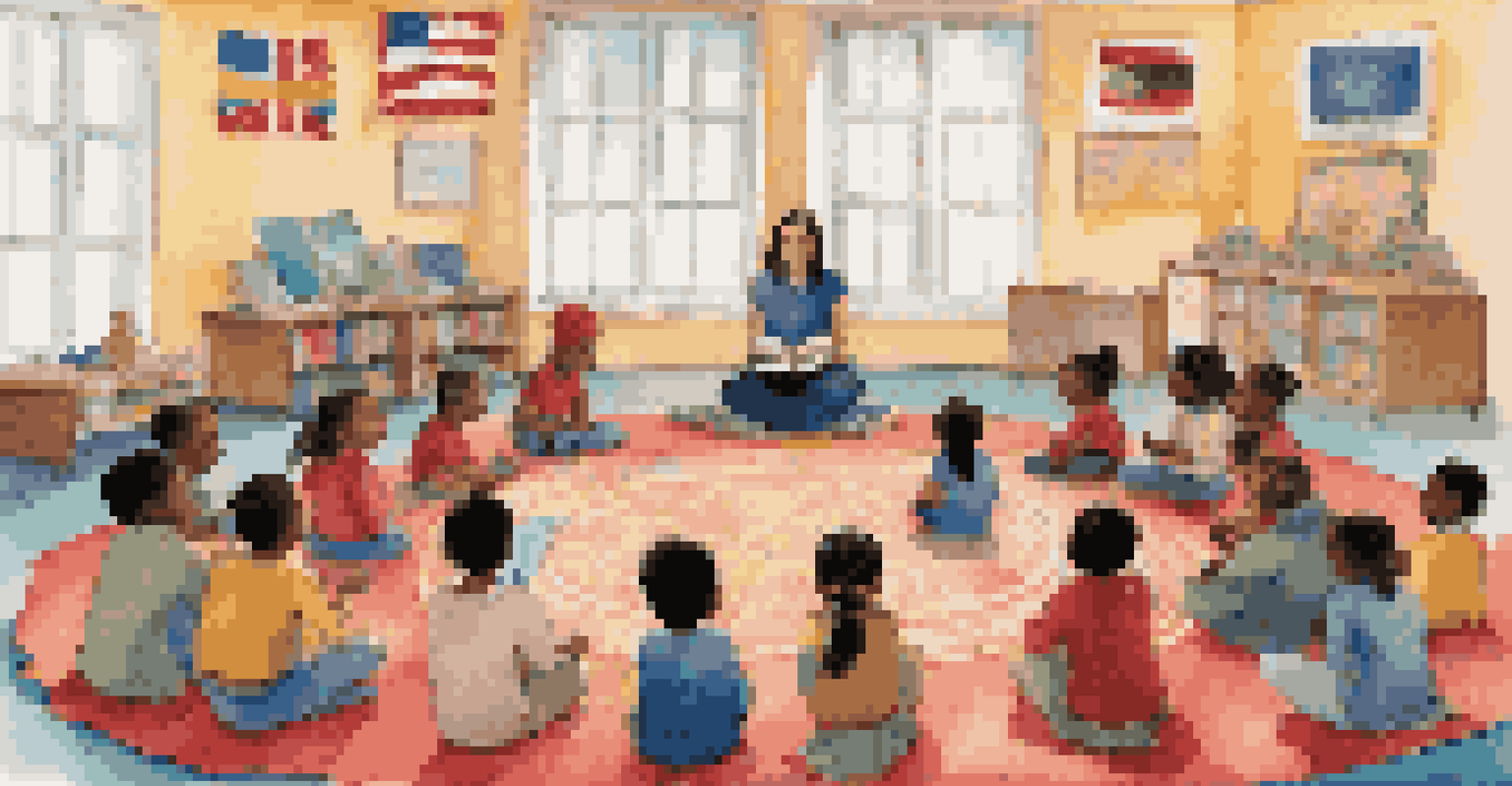Addressing Misconceptions About Culturally Responsive Teaching

Culturally Responsive Teaching Is Just About Race
One of the biggest misconceptions about culturally responsive teaching (CRT) is that it solely focuses on race. While race is an important aspect, CRT encompasses various dimensions, including ethnicity, language, socioeconomic status, and personal experiences. The goal is to create an inclusive environment that respects and values all students’ backgrounds.
Culturally responsive teaching is not just about race; it's about recognizing the rich tapestry of experiences that each student brings.
For instance, a classroom that celebrates diverse cultural holidays or incorporates multilingual resources isn’t just about race; it’s about recognizing the rich tapestry of experiences that each student brings. This approach cultivates a sense of belonging, encouraging students to engage more deeply in their learning.
By broadening our understanding of what constitutes cultural responsiveness, we can better appreciate the diverse identities present in our classrooms, fostering an educational experience that honors each student's uniqueness.
Culturally Responsive Teaching Is Only for Minority Students
Another prevalent myth is that culturally responsive teaching is only beneficial for minority students. In reality, CRT enhances the learning experience for everyone. It encourages all students to develop empathy and understanding towards different cultures, enriching classroom discussions and collaboration.

By integrating diverse perspectives into lessons, all students can learn to appreciate different viewpoints and experiences. This not only prepares them for a diverse workforce but also helps build a more inclusive society.
CRT Benefits All Students
Culturally responsive teaching enriches the learning experience for every student, fostering empathy and understanding across diverse backgrounds.
Ultimately, when we embrace CRT for all students, we create an environment where diversity is celebrated, leading to a more cohesive and respectful classroom dynamic.
Culturally Responsive Teaching Requires Special Training
Some educators believe that implementing culturally responsive teaching requires extensive training or special qualifications. While professional development can be beneficial, it’s not a prerequisite for incorporating CRT principles into the classroom. Simple strategies can be adopted by any teacher looking to enhance their practice.
When students see themselves reflected in the curriculum, they are more likely to invest in their education.
For example, teachers can start by learning about their students' backgrounds and interests, then use that knowledge to inform their lesson plans. This can be as straightforward as including stories from various cultures in a reading list or encouraging students to share their own experiences.
By taking small, intentional steps, educators can begin to weave culturally responsive practices into their teaching, making education more relevant and engaging for all students.
Culturally Responsive Teaching Is Just a Trend
Many people dismiss culturally responsive teaching as a passing trend, but it’s rooted in decades of educational research and practice. CRT is not merely a buzzword; it’s a fundamental shift towards inclusive education that recognizes the importance of cultural relevance in teaching. This approach has been shown to improve student engagement and academic outcomes.
Just like the shift towards differentiated instruction or social-emotional learning, culturally responsive teaching represents an evolution in educational philosophy. It acknowledges that students learn best when they see themselves reflected in the curriculum and feel valued in the classroom.
CRT Enhances, Not Lowers Standards
Culturally responsive teaching maintains high academic expectations by making learning relevant and accessible to all students.
Rather than viewing CRT as a trend, it’s essential to recognize it as an ongoing commitment to equity and excellence in education, one that benefits all learners, not just a select few.
Culturally Responsive Teaching Means Lowering Standards
A common misconception is that culturally responsive teaching involves lowering academic standards to accommodate diverse learning needs. This is simply not true; CRT actually aims to enhance rigor by making learning relevant and accessible to all students. The idea is to meet students where they are while still challenging them to grow.
For instance, a teacher might use culturally relevant texts that resonate with students' experiences, making complex themes more relatable. This approach not only maintains high expectations but also fosters a deeper understanding of the material.
By integrating students' cultural contexts into the curriculum, educators can elevate the learning experience, empowering all students to strive for excellence.
Culturally Responsive Teaching Is Only for Urban Schools
There’s a misconception that culturally responsive teaching is only necessary in urban schools with diverse populations. However, CRT is relevant in all educational settings, regardless of the demographic makeup. Every classroom contains students with unique backgrounds and experiences that can enrich the learning environment.
Even in more homogenous settings, students can benefit from learning about different cultures, fostering respect and understanding. Incorporating global perspectives can prepare students for a world that is increasingly interconnected.
CRT Is Relevant Everywhere
Culturally responsive teaching is important in all educational settings, as every classroom includes students with unique backgrounds and experiences.
By adopting culturally responsive practices, educators can create inclusive classrooms that value diversity, leading to well-rounded students ready to engage with a variety of perspectives.
Culturally Responsive Teaching Neglects Academic Content
Some critics argue that culturally responsive teaching detracts from academic content, suggesting that it prioritizes social issues over learning. In truth, CRT enhances academic content by making it more relevant and engaging for students. When students see themselves in what they are learning, they’re more likely to invest in their education.
For example, integrating culturally relevant examples in math problems or science experiments can make abstract concepts more tangible. This not only helps students grasp complex material but also promotes critical thinking skills.

Thus, culturally responsive teaching doesn’t sideline academic content; rather, it enriches it, creating a more dynamic and effective learning experience.